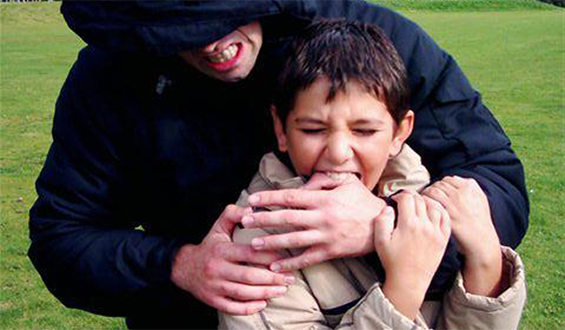STRANGER DANGER: 10 Things You Need to Teach Your Kids About Safety (Part 2)

Wangai Akin
Stranger Danger is an enlightenment campaign aimed at teaching children what they need to watch out for in their interaction with strangers.
No matter how much we as parents want to shield our kids or wards, they must come in contact with strangers as they grow older. What we need to do is teach them the skills to protect themselves in the world.
Recently in Nigeria, there was a story of a man who raped and killed his 8-year-old cousin. This shows that apart from strangers, children need to watch out for danger from familiar faces. We should not teach our children to be afraid of strangers but how to identify dangerous situations.
READ MORE: STRANGER DANGER: 10 Things You Need to Teach Your Kids About Safety (Part 1)
In Part One of this article, we talked about conversations every parent should have with their children – who a stranger is and how to identify a stranger. We also touched on body safety and how children from as young as 2 should take ownership of their bodies.
Making sure our kids know what to do to recognize and handle dangerous situations should be our priority as parents. So let’s get straight to the 10 Things you need to teach your Kids about Safety.
1. S.M.A.R.T : This is an acronym for SAFETY MEANS ALWAYS RECOGNISING TROUBLE. Build up your child’s emotional intelligence. Let them build the confidence to know when something is not right and be strong enough to seek help by speaking out.
Teach them to be alert to things happening around them.

READ ALSO: See Last Words of 7-year-old Boy Beaten to Death by his Father in Port Harcourt
2. Have Safety Rules: It’s good to point out danger to your child but children are inquisitive and want to know the ‘why’ behind any warning. Give them ground rules but also take your time to explain why some situations are dangerous.
The aim is not to put unnecessary fear into them but to empower them. Let them know you love them and want the best for them. Let’s imagine you tell your child not to go with strangers and they ask why, you could say,
“Because I love you and want to know where you are always.”
Let them know what to do if par adventure they get lost,
“If you lose Mommy in the grocery store, go to where we pay for things and tell them you’re lost, tell them your name, and don’t move from that spot until I come to get you.”
They know that its not okay to accept accept gifts from strangers when you are not there. Teach them to say,
“No, thank you sir/ma.”
Be very clear that they should never go anywhere with a stranger.
3. Warn about ‘Tricky People: Pattie Fitzgerald, founder of Safely Ever After, encourages parents to teach their kids about ‘tricky people’ instead of ‘stranger danger’. It is not enough to fear all strangers but kids must be able to identify who tricky people are.
Tricky people are not going to appear scary; they’re going to be charming, have an enticing offer, and seem friendly but their aim is to harm a child. One of (Fitzgerald’s) guidelines for knowing what people are unsafe is …
“Tricky people ask kids for help. If a safe adult needs help, they’ll ask another adult.”
She adds,
“Instead of looking for the boogie man, a child should look for the person asking them to do something that doesn’t sound right or ask if the adult is trying to get them to break one of their family’s safety rules or trick them.”
You can make it fun, play out ‘tricky person’ scenario with your kids and teach them how to react in such situations.
READ ALSO: Awful! Girl, 14, Obiamaka Orakwue, Raped and Killed in Her Home in Lagos
4. YELL and TELL: “Yell and Tell” is a program that is aimed at teaching children who see something dangerous to not be afraid to speak up. There are four things to tell your kids:
- Don’t be afraid to say ‘NO’ to a stranger.
- If a stranger makes you fell unsafe always, ‘YELL and TELL’.
- Yell, ‘HELP’ or ‘I DONT KNOW YOU’ to get someone’s attention.
- Tell someone you trust what has happened.

5. Create Safe Zones: If your child walks home from school everyday, or goes anywhere unsupervised, it is best to create a safe zone along the route. A safe zone is a place with a trusted adult a child can run to whenever they feel unsafe. This could be a school, a shop, a police station or a friend’s house. Let your kids memorize these places and how to get there safely and quickly.
To be continued.



Can’t wait for the continuation. This is very interesting to read and educating too. Thanks for sharing MIM.
thankz
Thanks MIM